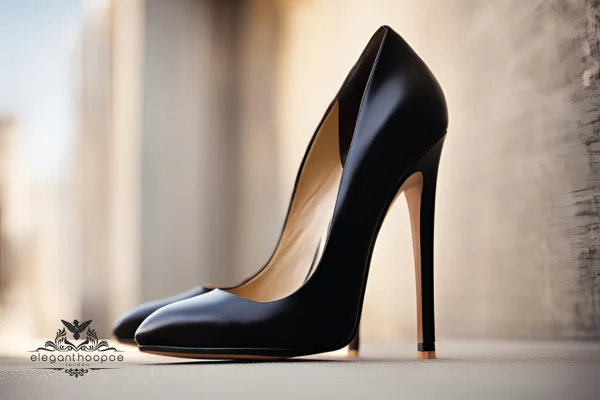What Is a Pear-Shaped Body and How Can You Style, Diet, and Exercise for It?
A pear-shaped body features wider hips and thighs with a smaller upper body. To balance this shape and enhance your natural curves, focus on styling tips that draw attention upward, exercises like cardio and strength training to tone the lower body, and a clean diet rich in fiber, protein, and healthy fats. Key takeaways include:
- Style smart: Use bold tops and structured layers to highlight the upper body.
- Exercise wisely: Combine cardio, HIIT, and lower-body strength workouts.
- Eat right: Embrace leafy greens, lean proteins, and avoid bloating foods.
Learn how to love your pear shape while staying fit, fashionable, and confident.
The pear-shaped body is also known as the triangle body shape, where the hips and thighs are the widest part of the body, and the waist and bust are smaller in proportion. Factors like genetics, hormones, age, lifestyle, and gender differences can lead to different types of fat distribution in the body.
Even though the pear shape is considered attractive and healthy, individuals may want to get rid of that stubborn fat in their lower body. Sometimes, even a healthy diet and exercise won’t work, suggesting that body contouring treatments like laser liposuction can be a better option in such cases.
In this article on elegant hoopoe, we will explore the pear body shape, the associated health risks, fashion tips, suitable styles, exercise, diet recommendations, and more.
What Is a Pear-Shaped Body?
Body shape is generally categorized into four types: pear, apple, hourglass, and inverted triangle. The pear body shape—also known as the triangle—is characterized by a wider lower body -hips, thighs, and buttocks- compared to the upper body. The main features include a smaller bust, narrow shoulders, and a well-defined waist.

Why the Pear-Shaped Body Is Considered Attractive
Once overlooked in favor of slimmer silhouettes, the pear-shaped body is now gaining admiration across cultures for its natural curves, symbolizing feminine features, beauty, and balance. Its well-defined waist and fuller hips create a visually appealing silhouette that fashion frequently highlights—especially in styles that accentuate the waist and flow over the hips.
Cultural shifts and new beauty standards have changed the definition of attractiveness. Meanwhile, media plays an important role in normalizing different body shapes across the world. As a result, many pear-shape individuals are gaining self-confidence, embracing their unique form, and becoming more accepted by people.
Moreover, men tend to have more fat in specific areas of their bodies, such as the abdomen, which may account for a higher rate of cardiovascular problems in males. Though it can seem frustrating, women’s propensity to accumulate fat in places like their legs or hips may shield them from this type of illness.

Styling Tips for a Pear-Shaped Body
Dressing a pear-shaped body can be easy if you know what suits your pear body and what doesn’t. Here, we will discuss the most important clothing options and fashion tips that can simply boost your natural beauty and make you fall in love with yourself:
1. Emphasize the Upper Body

To create visual balance, keep the attention on the upper half of your body like this:
Choose wide necklines like boat neck, scoop neck, or off-the-shoulder styles.
Look for statement sleeves, shoulder embellishments, or ruffle details.
Opt for bright colors, bold prints, or patterns on top to enhance your upper half.
You can also layer with cropped jackets or structured blazers that add volume without bulk.
2. Define the Waistline

The waist is where the natural beauty in a pear-shaped figure comes from—make sure to accentuate it in your style!
Go for wrap tops, peplum blouses, and belted dresses that cinch the waist.
Choose fit-and-flare or A-line silhouettes that hug the waist and hang over your hips.
Use belts to highlight the midsection of your body and refine your shape.
3. Balance the Lower Body

Make the lower half look longer and sleek with the right cuts and colors.
Wear high-waisted jeans or trousers to lengthen the legs and streamline the hips.
Stick to dark-wash denim, solid-colored skirts, or minimal-detail pants.
Choose straight-leg, bootcut, or slightly flared bottoms for balance.
Avoid low-rise styles, heavy embellishments, or tight fabrics on the hips and thighs.
4. Be Smart with Your Footwear and Accessories

Every detail counts when it comes to balancing your look from head to toe.
Choose pointed-toe shoes or heels to elongate your legs.
Avoid big footwear that adds unnecessary bulk to your lower half.
Use statement earrings, necklaces, or scarves to bring attention to your face and shoulders.
Remember, if you need any more help choosing the right outfit, check out our guide to building a capsule wardrobe for your pear shape body to get you covered for all occasions and seasons!
The Best Exercises for a Pear-Shaped Body
If you have a pear-shaped body, you may struggle with excess fat around your hips, thighs, and buttocks. While you cannot change your body shape, you can make healthy lifestyle choices that help you feel confident and improve your overall health. Here are some exercise recommendations for a pear body:

Cardiovascular Exercise: Cardiovascular exercises, such as running, cycling, or swimming, can help you burn calories and reduce overall body fat. Aim for at least 30 minutes of moderate-intensity cardio exercise most days of the week.
Brisk Walking on Incline or Flat Surfaces
Jogging or Running – Boosts calorie burn and tones the legs.
Cycling or Spinning – Excellent for burning fat and strengthening thighs.
Swimming – Full-body conditioning with low impact on joints.
Jump Rope – High-calorie burner that also tones the calves and thighs.
Strength Training: Strength training can help you build muscle and boost your metabolism. Focus on exercises that target your lower body, such as lunges, squats, and leg presses.
Squats (Bodyweight, Dumbbell, or Barbell) – Builds glutes and quads.
Lunges (Forward, Reverse, or Walking) – Targets inner and outer thighs.
Glute Bridges or Hip Thrusts – Lifts and tones the butt.
Step-Ups (Using a Bench or Box) – Builds strength and balance.
Leg Press Machine – Focuses resistance on thighs and glutes.

High-Intensity Interval Training (HIIT): HIIT workouts combine short bursts of intense exercise with rest periods. This type of workout can help you burn more calories in less time than steady-state cardio.
30 seconds Jump Squats, 30 seconds rest
30 seconds Mountain Climbers, 30 seconds rest
30 seconds Kettlebell Swings, 30 seconds rest
30 seconds Burpees, 30 seconds rest
Repeat circuit 3–4 times
Pear-Shaped Body Diet: What to Eat & What to Avoid
A healthy lifestyle is about more than just your body shape. Focus on making choices that make you feel good and support your overall health and well-being. You can always use our pear-shaped body diet guide to eat what’s best for you and stay on track.
Superfoods to Embrace
Nutrient-dense foods help manage weight, boost metabolism, and support hormonal health. Therefore, they should be incorporated into any pear-shaped body diet.
- Leafy Greens (Spinach, kale, arugula): Low in calories, high in fiber, and rich in vitamins A, C, and K.
- Berries (Blueberries, strawberries, raspberries): Packed with antioxidants and fiber; ideal for snacks or smoothies.
- Quinoa: A protein-rich grain that keeps you full and supports muscle growth.
- Sweet Potatoes: Provide complex carbs for stable energy without spiking blood sugar.
- Legumes (Chickpeas, lentils, black beans): High in fiber and plant-based protein.
- Lean Proteins (Chicken breast, fish, tofu): Essential for toning and metabolic function.
- Healthy Fats (Avocados, nuts, seeds, olive oil): Regulate hormones and curb cravings.
- Greek Yogurt: Supports digestion and adds a protein boost to meals.

Foods to Avoid or Limit
Some foods can increase bloating, water retention, or hormonal imbalance in pear-shaped individuals.
- Excess Soy (Tofu, soy milk): May raise estrogen and contribute to bloating.
- Caffeine: Can lead to dehydration and make bloating more noticeable.
- Refined Carbs (White pasta, white bread): Promote water retention and offer little fiber.
- Processed Meats: Contain additives that may cause inflammation or digestive distress.
- Trans Fats: Found in fried or packaged foods; these increase inflammation and fat storage.
Portion Control and Balanced Meals
Managing how much you eat is just as vital as what you eat. Focus on meals that offer fiber, lean protein, and healthy fats. Pay attention to portion sizes when you eat. Use smaller plates and measure your food to avoid overeating.
Sample Meals:
- Breakfast: ½ cup oats + ½ cup berries + a handful of almonds
- Lunch: 1 cup quinoa + mixed greens + chickpeas + olive oil dressing
- Dinner: 4 oz grilled chicken + 1 medium sweet potato + steamed broccoli

Self-Love and Mindful Eating
A successful pear-shaped body diet isn’t just about food—it’s about mindset.
- Practice positive affirmations: “I love my curves,” “I nourish my body with love.”
- Eat mindfully: Savor each bite and listen to hunger cues.
- Enjoy movement: Choose activities that feel joyful—dancing, yoga, walking.
- Surround yourself with supportive energy: People who uplift and empower you.
Health Concerns Linked to Pear-Shaped Bodies
While pear-shaped bodies are often seen as healthy due to fat being stored in the hips, thighs, and buttocks—areas traditionally associated with lower cardiovascular risk—excess fat in these regions can still pose health challenges. Conditions such as joint strain and type 2 diabetes may arise from prolonged fat accumulation. Research shows that any form of weight loss contributes to reduced cholesterol levels, improving overall heart health. However, balancing body composition remains important, especially when aiming to maintain long-term wellness.
Treatment Options and Body Contouring for Pear Shapes
For those looking to reshape or refine their pear-shaped bodies, a combination of healthy lifestyle habits and medical interventions like liposuction, tummy tucks, or breast augmentation can be effective. Even though a balanced diet and consistent physical activity are proven to remove body fat in general, some areas may not respond to these attempts, requiring plastic surgery like liposuction to target particular localized fat stores. Feel free to contact Elegant Hoopoe if you’re looking for laser liposuction in Dubai.
At Elegant Hoopoe, customized treatment plans—including both surgical and non-surgical procedures—are available to help you sculpt your ideal shape with expert guidance tailored to your goals and lifestyle.






